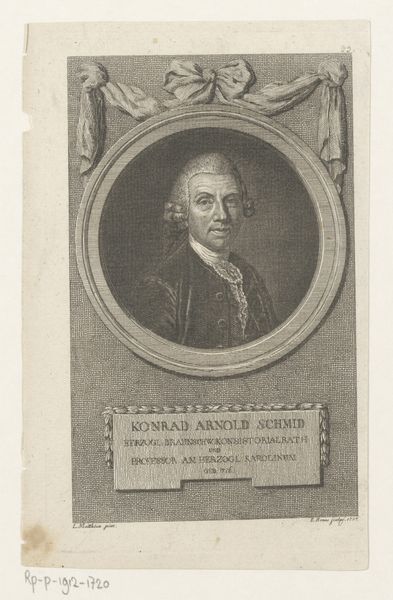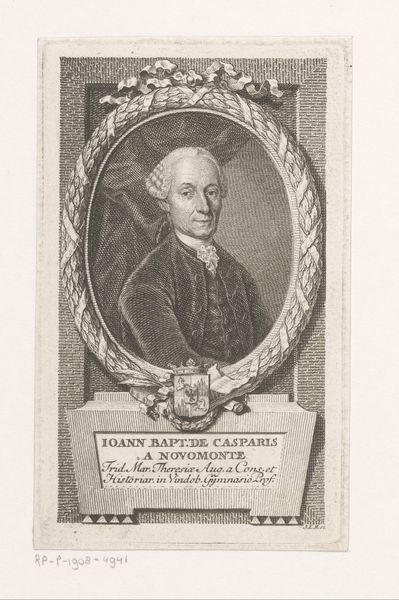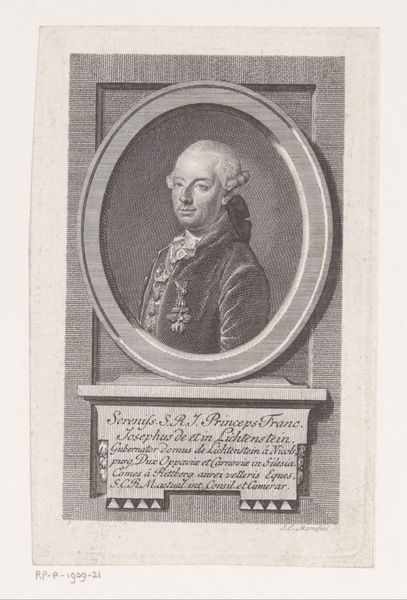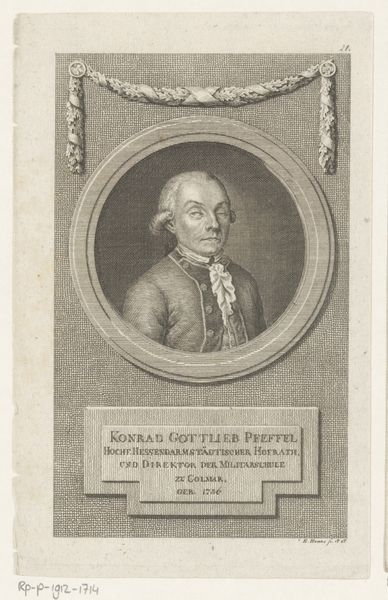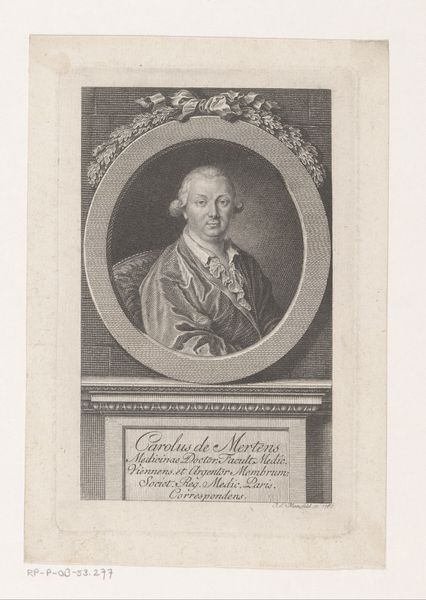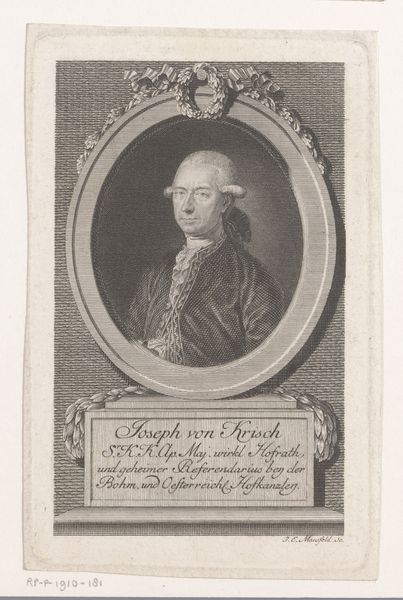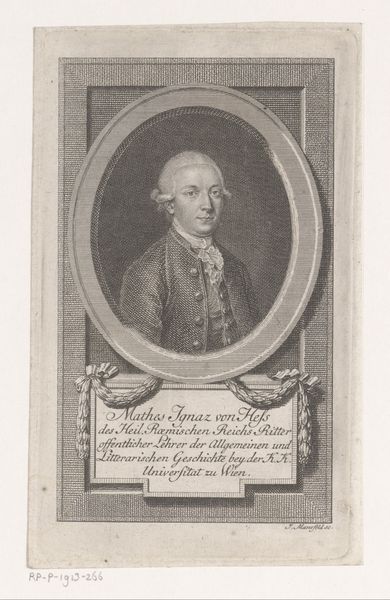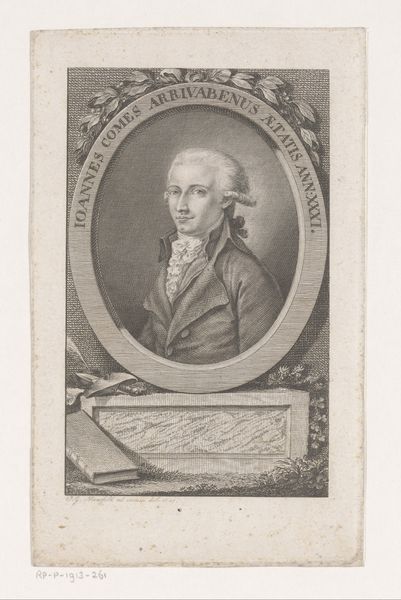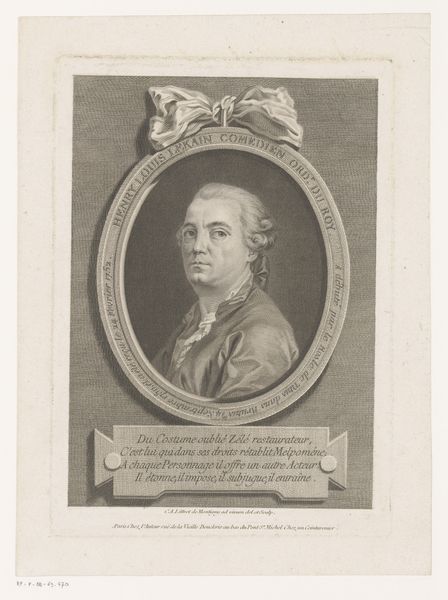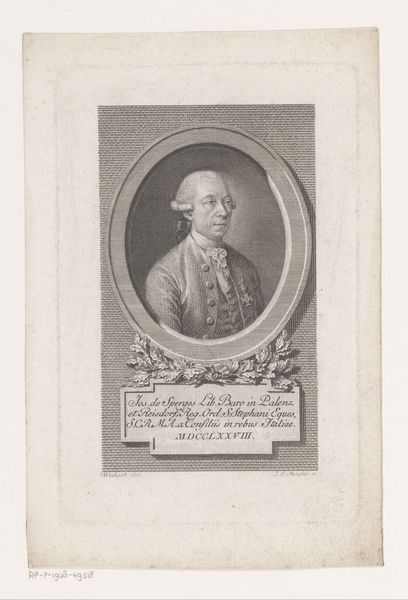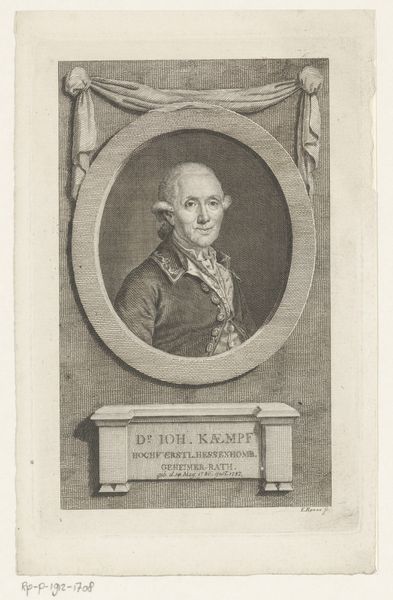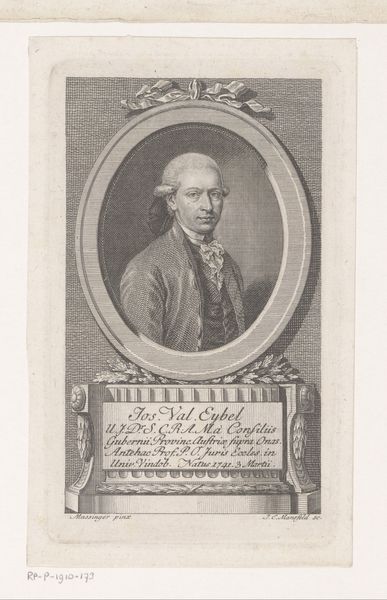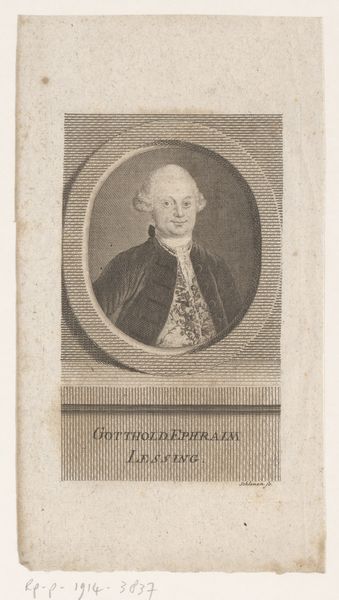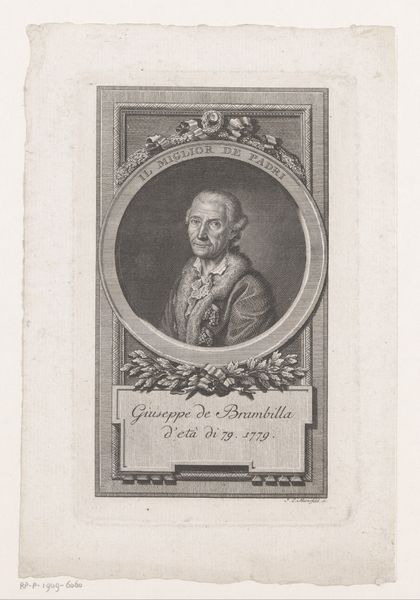
print, engraving
#
portrait
#
neoclacissism
# print
#
old engraving style
#
historical photography
#
19th century
#
engraving
Dimensions: height 169 mm, width 127 mm
Copyright: Rijks Museum: Open Domain
Eberhard Siegfried Henne made this portrait of Christian Gottlieb von Gmelin around 1749 using etching. Notice how the composition is structured by geometric forms. The oval frame encasing Gmelin’s bust is echoed by the rectangular plaque below, creating a balanced, almost architectural structure. This formal arrangement speaks to the Enlightenment’s emphasis on order and reason. Henne uses fine, precise lines to define the textures of fabric and skin. This attention to detail, however, doesn't merely represent reality; it also constructs a visual language of status. The formal qualities of the portrait, therefore, function as a visual signifier, reinforcing Gmelin's position within society. The print is not just an aesthetic object but a carefully constructed statement about identity, status, and the power of representation. It invites us to consider how art functions as a tool in shaping and reflecting cultural values.
Comments
No comments
Be the first to comment and join the conversation on the ultimate creative platform.
